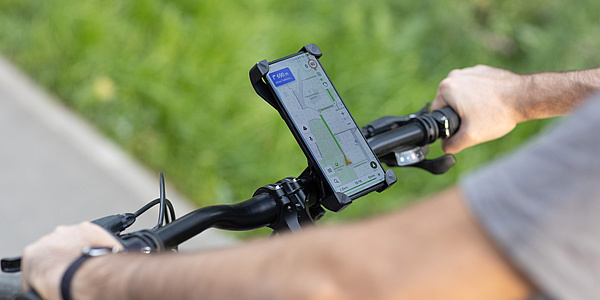Alexander Lex: How can data be communicated more effectively?
![[Translate to Englisch:]](https://www.tugraz.at/fileadmin/_processed_/d/4/csm_banner2-lex-by-tugraz_6d7bab9c99.jpg)
You studied at TU Graz, then worked as an academic at Harvard and in Utah. You’ve been back at TU Graz for a few weeks now. What were the biggest differences during your first transition?
Alexander Lex: At an elite university like Harvard, you really notice just how much funding is available. However, for me, the biggest difference was the pressure that researchers worked under. They are incredibly driven to succeed. In Boston’s tech bubble, conversations revolved around computer science in every coffee shop.
During my postdoc, I found this very enriching on a personal level, but it just would have been too intense for me in the long run. In Utah, where I subsequently took up a professorship, the city was much more diverse. And not everything revolved around technology and science either, which made a huge difference.
Did you have a life outside academia during that time?
Lex: No, not during my postdoc (laughs). Afterwards, I was more relaxed, partly because I was fortunate with grants and my professorship. I was in a position to hire students and implement many things thanks to the financial resources that were available to me. This also gave me more time for my personal life, which was especially great for me in Utah as an avid snowboarder. I could hit the slopes in the morning and be teaching again by noon. It was wonderful.
Do you plan to carry on in the same vein in Graz?
Lex: It’s a bit more challenging in Graz (laughs). But even though the slopes are further away, hotel rooms in ski resorts are comparatively affordable. They were a luxury in the USA.
Returning to your work now: what areas of research speak to you most?
Lex: Mainly data visualisation and human-computer interaction. My interests in these fields are very broad. I work on disinformation. But also in the medical field, drug development and precision diagnostics. These highly complex problems generate vast amounts of data that need to be analysed. While purely algorithmic forms of analysis are great, they’re not enough on their own. Experts have extensive contextual knowledge about the data that automated evaluations simply cannot capture. If we prepare the data well, connections can be made that an algorithm alone couldn’t achieve.
Why are visualisations important anyway?
Lex: As humans, our visual system is extremely powerful. For example, we can only identify a few patterns from a table with lots of data. But if we were to have an image with lots of blue dots and a handful of red ones, we can quickly and effortlessly see where the red dots are as well as roughly how many of them there are. We draw on this ability, to make data accessible. And we also see how important visualisation is in communication. For instance, journalists use graphics to present election results or voter flow analyses. I’m always thrilled to see just how many of the ideas from my community end up being adopted.
Is visualisation also an important topic in the area of disinformation?
Lex: Yes, a very important one. Research on disinformation is mostly based on texts and networks. And that is very important. Still, visualisations are especially important in data-driven dialogues. Generally, social media posts with graphics are more likely to be noticed. Graphics also make a post appear more credible and fact-based. Posting pure text feels very different from presenting data in a graphic. This is interesting because we see that graphics from reputable sources are often taken and placed in a false context. Counterarguments then become incredibly difficult – and fact-checking is very labour-intensive. We took a look at the dialogue that emerges as a result: people respond to facts with anecdotes, compare incomparable data, or introduce data from unreliable sources. It’s fascinating.
What led you to this field of research?
Lex: I started out in biomedical visualisation at TU Graz. For ten years, I worked there as a researcher, mainly focusing on network visualisations – biochemical and signalling pathways that describe processes in organisms.
As my group grew, so did the scope of my research activities. That’s the great advantage of a senior research position and being able to engage team members from different fields. I’ve always been interested in the interface between humans and machines. How can computer systems be built so that people can interact with them as effectively as possible? There are a lot of overlaps with psychology, and it excited the hacker in me that I could conduct qualitative research on one hand while also doing a lot of engineering in the form of software system development on the other.
So, is that what you have planned for your professorship in Graz?
Lex: Well, I definitely want to continue this research. But I also want to take up an additional research field that is still quite new in our community. It centres on the accessibility of visualisations for people with visual impairments. We’ve already worked on automated text descriptions supported by AI and LLMs. But especially in biology, there are highly complex visualisations that cannot be captured by text descriptions alone. Our approach involves 3D-printed models, which can be used in teaching in particular. Once students understand these basic visualisations, other visualisations can then be effectively conveyed through text descriptions. I definitely want to continue working on this and see great collaboration opportunities in Graz.




